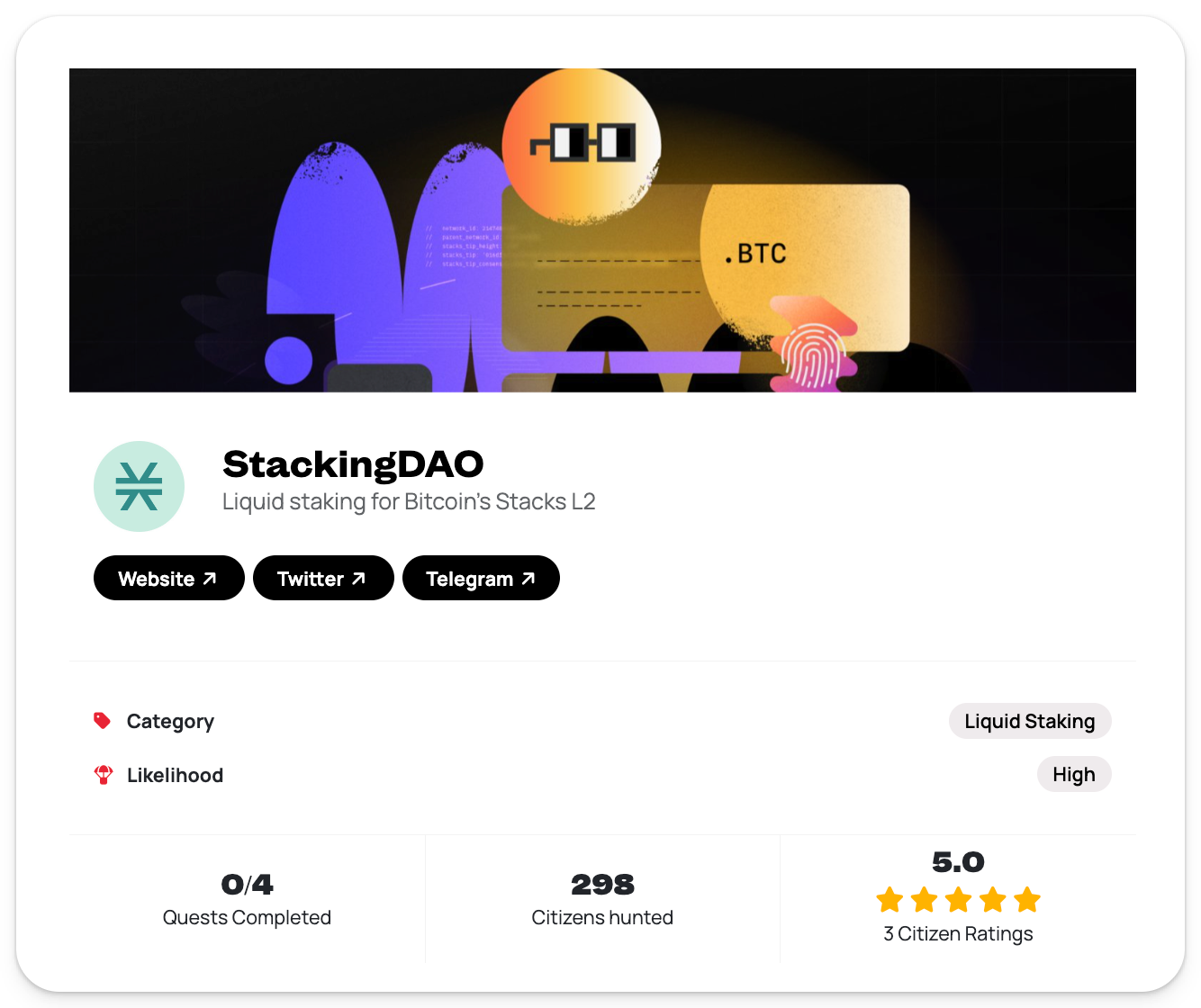[ad_1]
As Bitcoin celebrates a new all-time high, it’s time to take a closer look at one of the investment narratives that’s helping drive renewed interest toward the asset: Bitcoin L2s.
Bitcoin is the oldest blockchain and, of course, the most battle-tested crypto. Its biggest downside? Slow and expensive transactions, particularly during periods of high activity. Lightning Network, a payments channel protocol in Bitcoin’s scaling scene, is an earnest and interesting effort here, but it’s failed to reach breakout traction to date due to UX and liquidity issues.
That said, the arrival of Ordinals NFTs in January 2023 kicked off a huge resurgence of interest in building on Bitcoin, and that revival led to a reinvigoration of existing scaling efforts like Stacks and also to a boom of new efforts with a range of different approaches.
Accordingly, one of the next big frontiers in crypto is this newly resurgent Bitcoin Layer 2 (L2) scene, so let’s get you up to speed on some of the rising contenders that are aiming to level up Bitcoin’s capabilities.
Here are 8 Bitcoin L2 projects you should know about
Bison Network 
Bison Network, developed by Bison Labs, is a zero-knowledge (zk) rollup solution that uses ZK-STARK technology. It’s designed to significantly increase transaction throughput, reduce fees, and integrate smart contract functionalities around BTC.
By leveraging Ordinals for data storage, Bison ensures that all transactions and smart contracts are as secure and immutable as the underlying Bitcoin blockchain. Its infrastructure includes the Bison OS for managing transactions and token contracts and a Bison Prover for generating zero-knowledge proofs.
This setup paves the way for more Bitcoin DeFi experiments and allows users to independently verify transactions quickly and efficiently.
Stacks 
Stacks stands out in the Bitcoin L2 scene for its distinctive approach to extending Bitcoin’s functionality, primarily through its integration of smart contracts directly on top of Bitcoin. It operates on a unique consensus mechanism known as Proof of Transfer (PoX), which fundamentally links its operations and security directly with Bitcoin.
A key feature that sets Stacks apart is how users can stake STX tokens to earn BTC. This approach not only incentivizes participation within the Stacks ecosystem but also strengthens the bridge between Stacks and Bitcoin, reinforcing the value proposition of both networks.
The upcoming Nakamoto upgrade is poised to further solidify Stacks’ position by turning it into a proper L2 via fully inheriting Bitcoin’s security. This upgrade will also introduce faster block production times on Stacks, independent of Bitcoin’s block times, while still achieving 100% Bitcoin finality. This means that once a transaction is confirmed on Stacks, it will inherit the same level of irreversibility as a Bitcoin transaction.

BitVM 
BitVM introduces a new approach to smart contracts on Bitcoin without necessitating changes to Bitcoin’s existing rules. This system allows for the verification rather than execution of computations on Bitcoin, drawing parallels to the concept of optimistic rollups on Ethereum.
At its core, BitVM employs a unique system of hashlocks, timelocks, and large Taproot trees for executing universal computations. This design allows the offchain execution of programs with minimal onchain footprint, only requiring onchain actions in case of disputes.
While BitVM is currently in its infancy, its potential for enabling advanced functionalities such as two-way pegs with sidechains and rollups on Bitcoin suggests a promising avenue for expanding the OG blockchain’s capabilities without the need for a soft fork.
Botanix 
Botanix Labs has pioneered the Spiderchain design, a new L2 format for allowing seamless two-way pegged sidechains with Bitcoin without altering Bitcoin’s base layer. The in-progress Botanix protocol is the first implementation of this novel approach and is integrated with the Ethereum Virtual Machine (EVM) to bridge the gap between Bitcoin’s robustness and Ethereum’s versatile smart contract ecosystem.
The core of the Spiderchain design philosophy is a network of Orchestrators that manage multisig wallets, facilitating the peg-in and peg-out processes between Bitcoin and the Spiderchain. These Orchestrators run both a Bitcoin node and a Spiderchain node, and Orchestrators are chosen in a randomized manner based on Bitcoin block hashes to ensure fair and secure operations.
Chainway 
Chainway, another rising force in the Bitcoin L2 scene, is backed by prominent VCs like Galaxy Digital and Delphi Ventures. The team released the BitcoinDA data availability adapter for connecting rollups to Bitcoin, and they’ve also started work on Citrea, a zk-rollup solution that inscribes its proofs to Bitcoin using the BitVM.
Citrea is being designed as a “Type 2 zkEVM” for Bitcoin and uses zero-knowledge proofs to batch transactions, thereafter ensuring validity with succinct proofs. This approach allows for easy verification and access to Citrea’s full state by anyone running a Bitcoin node. Citrea uses $BTC as its native token ($cBTC within Citrea) and will offer the OG crypto broader transaction capabilities.
Kasar Labs 
Kasar Labs, a Starknet engineering and research team, is working to integrate Starknet’s zk-rollup capabilities with Bitcoin. Recently, in collaboration with Taproot Wizards, they launched a data availability adapter that allows developers to anchor rollups to Bitcoin.
Kasar’s work also notably includes Barknet, a new Bitcoin rollup that leverages Starknet’s Madara sequencer and the Cairo VM to tap into the power of Starknet’s advanced cryptographic proofs.
Merlin Chain 
Another EVM-compatible zk-rollup play, Merlin Chain was built by the Bitmap Tech team as an L2 that caters to scaling a range of different Bitcoin-native protocols, including Atomicals, Bitmaps, BRC-20s, Stamps, and more. Merlin Chain recently launched its mainnet and kicked off a staking campaign aimed at distributing its upcoming $MERL governance token as a fair launch. As a result of this, since February 9th, Merlin Chain added $2B in TVL.
Ark 
Ark is a novel L2 designed to enhance Bitcoin’s transaction scalability. Unlike traditional methods that rely on state channels or rollups, Ark introduces a unique approach with its virtual transaction outputs (VTXO), allowing for anonymous, offchain payments. These VTXOs must be used or “refreshed” within four weeks to prevent expiration.
At its core, Ark facilitates transactions through untrusted intermediaries known as Ark Service Providers (ASP), which are always-on servers providing liquidity, much like Lightning Network service providers, but without the need for users to manage liquidity themselves. This setup enables users to send and receive payments anonymously, preserving their privacy without the complexities of onboarding setups like acquiring inbound liquidity.
Key to Ark’s operation is a process called “lifting,” where users can convert their onchain UTXOs to offchain VTXOs in a trustless manner. Furthermore, Ark’s design allows for transactions to be conducted without direct links between senders and receivers, significantly reducing one’s onchain footprint compared to traditional methods such as the Lightning Network.
The big picture
Today, Bitcoin’s market cap is over $1.3 trillion, yet much of the capital on the network remains idle for now as a result of programmability and scalability constraints.
The renewed Bitcoin L2 ecosystem is emerging as a strategic answer to these limitations and has gained a second wind thanks to the rise of Ordinals and growing inspiration from Ethereum’s increasingly layered architecture.
This L2 evolution, coupled with blooming institutional interest via the first spot Bitcoin ETFs in the U.S., sets the stage for a resurgence in Bitcoin adoption. As these developments unfold, BTC is poised to transition from a predominantly passive store of value to an active, programmable crypto, a shift that can redefine its role in the broader cryptoeconomy and unlock new horizons for innovation and growth!

[ad_2]
Read More: www.bankless.com









 Bitcoin
Bitcoin  Ethereum
Ethereum  Tether
Tether  XRP
XRP  Solana
Solana  USDC
USDC  TRON
TRON  Dogecoin
Dogecoin  Lido Staked Ether
Lido Staked Ether  Cardano
Cardano  Wrapped Bitcoin
Wrapped Bitcoin  Hyperliquid
Hyperliquid  Wrapped stETH
Wrapped stETH  Sui
Sui  Bitcoin Cash
Bitcoin Cash  Chainlink
Chainlink  LEO Token
LEO Token  Stellar
Stellar  Avalanche
Avalanche  Toncoin
Toncoin  WhiteBIT Coin
WhiteBIT Coin  USDS
USDS  Shiba Inu
Shiba Inu  WETH
WETH  Wrapped eETH
Wrapped eETH  Litecoin
Litecoin  Binance Bridged USDT (BNB Smart Chain)
Binance Bridged USDT (BNB Smart Chain)  Hedera
Hedera  Monero
Monero  Ethena USDe
Ethena USDe  Polkadot
Polkadot  Bitget Token
Bitget Token  Coinbase Wrapped BTC
Coinbase Wrapped BTC  Uniswap
Uniswap  Pepe
Pepe  Pi Network
Pi Network  Aave
Aave  Dai
Dai  Ethena Staked USDe
Ethena Staked USDe  Bittensor
Bittensor  OKB
OKB  BlackRock USD Institutional Digital Liquidity Fund
BlackRock USD Institutional Digital Liquidity Fund  Aptos
Aptos  Cronos
Cronos  NEAR Protocol
NEAR Protocol  Internet Computer
Internet Computer  Jito Staked SOL
Jito Staked SOL  sUSDS
sUSDS  Ethereum Classic
Ethereum Classic